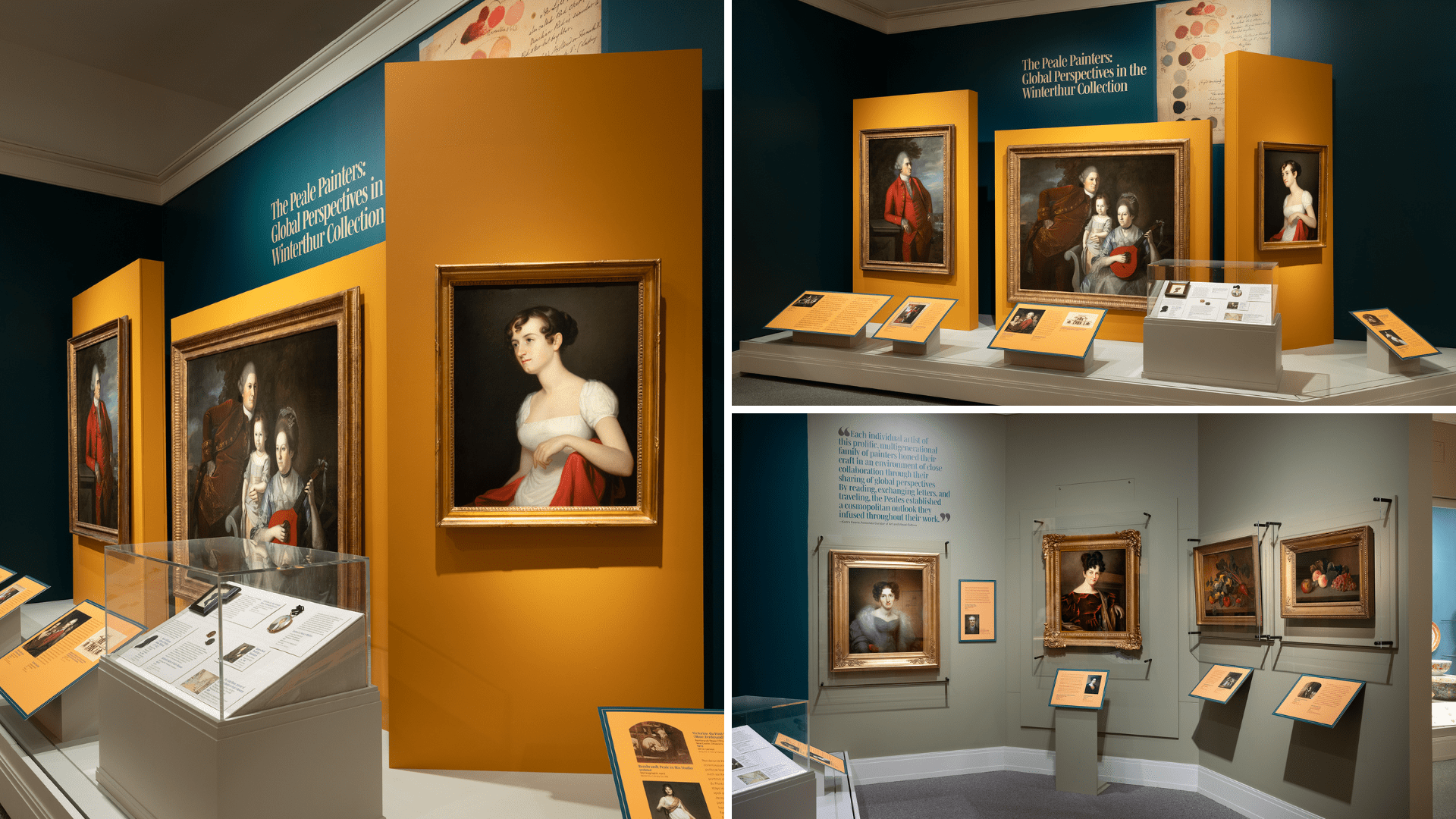
WINTERTHUR, DE (October 17, 2024)—Works by Charles Willson Peale and members of the Peale family, regarded as America’s first family of artists, are currently on view at Winterthur Museum, Garden & Library.
While best known for its collection of American decorative arts, the seven oil paintings and four smaller case objects bring to light Winterthur’s premier collection of American paintings from the eighteenth and nineteenth centuries.
“The featured works come from various rooms in the house and other locations at Winterthur,” said Kedra Kearis, Ph.D., associate curator of art and visual culture. “Brought into close viewing proximity, these paintings form a conversation with one another. In addition, the artists themselves are placed in conversation with artistic traditions of the past and contemporary trends across the Atlantic.”
A distinguished American inventor, painter, politician, scientist, and soldier in the Revolutionary War, Charles Willson Peale established a painting studio in Philadelphia in 1776 and was a key member of the Sons of Liberty. His portraits of prominent Americans from the late 18th century remain widely recognized today. In 1784, he established one of the first museums in America, located in Philadelphia, which members of the extended family helped to run.
“Charles Willson Peale changed the course of American art through his artistic practice, his museum business, and the mentorship of his family in the arts. He led the Peale painters in fashioning the face of a new nation.” The family’s artistic legacy spans more than a century, from the colonial period through the Victorian era.
“Each artist in this prolific, multigenerational family honed their craft within a collaborative environment, sharing global perspectives,” said Kearis. “It is my hope that, by emphasizing the various pathways for education taken by the Peale artists across the generations, a picture might emerge of how artistic formation differed according to period, race, and gender.”
“In this sense, the three generations of Peale family artists paints a picture of a changing nation, one full of opportunity and encouragement, but also with its own sets of limitations and challenges.”
Winterthur’s founder, Henry Francis du Pont, collected works by Charles Willson Peale, his brother James Peale, and his son Rembrandt Peale. Over the years, Winterthur has expanded the collection to include works by Sarah Miriam Peale and Mary Jane Peale. Both women remained unmarried to pursue painting professionally.
Among the works on display is The Edward Lloyd Family (1771) by Charles Willson Peale. “About fifty years after Charles painted this portrait of Maryland planter Edward Lloyd, the enslaved Frederick Douglass was brought by his grandmother to live at Wye House, a reminder that the prosperity of the Lloyds was built upon an economy of enslavement,” added Kearis.
Other highlights include two portraits of women of the du Pont family as well as still life paintings. The gallery interpretation features a rich array of graphics, either self-portraits by the artists or portraits completed by another family member, illustrating this remarkable and ongoing conversation among the close-knit generations of Peale artists. The exhibit also includes a silhouette from the early 1800s thought to be produced by profile cutter Moses Williams, a formerly enslaved member of the Peale household.
The installation displays some of the many Peale works in the Winterthur collection which will be part of an upcoming large-scale exhibition in 2027. “The range of works by the Peales and related archival resources on the family here at Winterthur are the subject of new research,” said Kearis.
“The Peale Painters: Global Perspectives in the Winterthur Collection” is part of Conversations with the Collection. In this exhibition, visitors learn how Winterthur staff and students use the museum collection to understand America’s material past, see what’s new in the collection, and look closely at objects to better understand the past and the present.
# # #
ABOUT WINTERTHUR MUSEUM, GARDEN & LIBRARY
Winterthur—known worldwide for its preeminent collection of American decorative arts, naturalistic garden, and research library for the study of American art and material culture— offers a variety of tours, exhibitions, programs, and activities throughout the year.
Winterthur is located on Route 52, six miles northwest of Wilmington, Delaware, and five miles south of U.S. Route 1. Winterthur is committed to accessible programming for all. For information, including special services, call 800.448.3883 or visit winterthur.org.